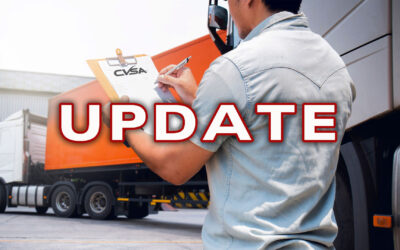Proper Cargo Securement: What Every Driver Needs to Know About Hauling Cargo
When it comes to hauling cargo, securement isn’t just a suggestion—it’s a critical component of safety. From managing vehicle dynamics to maintaining proper stopping distances, ensuring your load stays secure is key for safe travels down the roadway.
Whether you’re a seasoned driver or new to the field, understanding the essentials of cargo securement is vital for both your safety and the well-being of others sharing the road. Let’s dive into five key principles every driver should know:
1. Keep Cargo Steady and Secure
Your cargo must be secured firmly enough to prevent any shifting, sliding, or rolling during transit. Normal driving conditions, like sudden braking, lane changes, or bumpy roads, can destabilize unsecured loads.
Here’s the deal: shifting cargo doesn’t just affect the load—it can throw off your vehicle’s balance and create a serious hazard for everyone on the road. Stability is non-negotiable.
2. Use the Right Tools for the Job
Not all tie-downs are created equal. When hauling cargo, it’s essential to use securement devices like straps, chains, or binders that are strong enough to handle the job.
These devices must meet strict performance standards, capable of withstanding forces from all directions—forward, rearward, and lateral. Remember, a weak or improperly used strap can mean disaster in motion.
3. Regulations Apply to Every Load
Whether you’re transporting lumber, heavy machinery, or hazardous materials, cargo securement rules apply to everything. Each type of cargo may have specific guidelines—for example, logs, steel coils, or vehicles—but the overarching principle remains the same: secure it properly or face the consequences.
4. Inspections Are Mandatory
No excuses here—drivers are required to inspect their cargo securement systems regularly.
- Before the trip: Verify that everything complies with regulations.
- During the trip: Check that the cargo is still secure, especially after significant stops like weigh stations or loading points.
Frequent inspections can save you from penalties, accidents, or worse.
5. Accountability Matters
Hauling cargo safely is a shared responsibility between the driver and the carrier. Both parties must ensure the load is properly secured, loaded, and maintained in line with FMCSA regulations.
Neglecting this responsibility can result in fines, violations, or even catastrophic accidents. Safety begins with accountability—don’t cut corners.
Stay Compliant with FMCSA Regulations
For more in-depth guidance, refer to FMCSA Part 393.100 regulations. They outline everything you need to know about hauling cargo safely and legally.
Got Questions? Let’s Talk Cargo Securement
Whether you’re preparing for your next trip or fine-tuning your securement skills, we’re here to help. Check out this detailed resource for additional insights.
When hauling cargo, safety isn’t optional—it’s your ticket to a smooth and secure journey. Drive safe and haul with confidence!
Learn more about DriveTeam’s Load Securement Training Course.
More From Our Blog
Fall Driving: Why Speed Is Your Worst Enemy on the Road
Fall Driving 2025 Let's cut to the chase: speeding isn't a small risk. It's the number one cause of fatal crashes for people your age, period. Whether you're cruising past the speed limit sign or just driving too fast for the actual road conditions—like rain, slick...
Your RoadCheck 2025 Safety Debrief: Takeaways for Professional Drivers
The results are in from the Commercial Vehicle Safety Alliance's (CVSA) 2025 International Roadcheck, a three-day inspection blitz conducted across the U.S., Canada, and Mexico on May 13-15. This initiative, which involved 56,178 commercial motor vehicle, driver, and...
The Critical Importance of Police Driving Training
How Comprehensive Police Driver Training Enhances Safety and Reduces Risks To date, we have lost seventy-seven police officers nationwide in the line of duty. Tragically, twenty-seven of these deaths involved vehicles. According to the National Law Enforcement...




From using the right tie-downs to regular inspections, securing your load prevents shifting, accidents, and potential hazards.
I particularly appreciate the emphasis on using the right tools and staying compliant with FMCSA regulations.
Using the right hitch and trailer combo has saved me from a few close calls. Safety on the road starts before you even leave the driveway.
Awesome tips! I’ve seen too many trailers swaying on the highway due to poor loading. These tips could prevent a serious accident.
This article breaks it down perfectly. A good refresher for experienced haulers and a solid starter for beginners.”